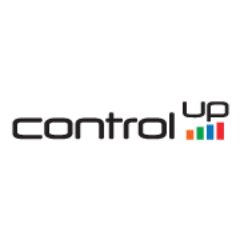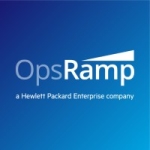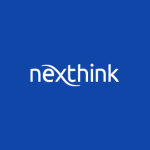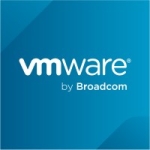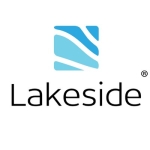What is our primary use case?
First, I need to explain our environment and its composition. We mainly use virtualization platforms, such as Hyper-V hypervisor and VMware vSphere, and recently we purchased the Nutanix platform. We are still in the deployment phase, so we have not yet integrated ControlUp with our Nutanix platform, but we have already configured it to monitor the other visualization platforms, Hyper-V and VMware vSphere. We don't have VDI environments, so we don't use this part of ControlUp. Instead, we are monitoring the hypervisors, the virtual machines and the critical ones. Because the licensing used by ControlUp is per IP address, we have a limited number of IP addresses to monitor.
We monitor critical platforms such as Microsoft Exchange and SharePoint alongside storage. Unfortunately, ControlUp cannot monitor the networking infrastructure. Other solutions, such as SolarWinds NPM, give you many modules where you can purchase their license and add more features. ControlUp is a very good solution, but when we monitor an environment, it is very difficult. It's not appropriate to have multiple monitoring solutions, and the administrator needs only one console to see the global network and infrastructure being supervised. That's the only thing ControlUp lacks to become the best solution ever.
What is most valuable?
A valuable feature is the ability to run scripts when an event happens. For example, if the system partition starts to lack space, we have a script that deletes temporary files and other unwanted files. We like this feature the most. It also gives us an insight into the direction of our infrastructure. Another feature we like is the capacity to plan our infrastructure. We can know if our infrastructure can handle more workloads or if we need to add more computing resources.
What needs improvement?
The only thing we need to be available in ControlUp is the ability to monitor network infrastructure. Currently, I am both the system administrator and in charge of administrating the network. Unfortunately, we don't have a solution for monitoring the network infrastructure. ControlUp doesn't allow us to monitor the network infrastructure, so we are obliged to acquire another solution that allows us to monitor the network. But we are faced with two different and heterogeneous solutions, which is the only downside with ControlUp.
In addition, the graphical user interface needs to be improved from version to version. When a new version is introduced, there must be changes in the user interface. Sometimes it is crowded with a lot of information and graphs, which disturbs and does not allow us to focus on an object.
The solution lacks network monitoring and should be improved in the next version. If it isn't improved and takes too much time to implement, we can't stay without a network monitoring solution, and we will be obliged to acquire another one. We may acquire the SolarWinds NPM module to monitor the network infrastructure. When working with government institutions, we must justify our purchases and can't purchase two solutions simultaneously.
For how long have I used the solution?
We have been using this solution for 18 months. For some context, I work with a government institution here in Morocco, and we have many contracts with different companies. Sometimes they come to us and present a solution that fits our needs, and then we buy it. So a company approached us and presented ControlUp, and we were very interested in it. One of their engineers came, and we installed it together and had an opportunity to test it. It was good, so we deployed it in a production environment.
Once you install and configure a monitoring solution, it works independently. The majority of work is done during the installation and deployment process. If there is an incident and something is wrong, then we can connect and see what is happening.
It is deployed on-premises and on four servers, one for the database, one for the insights, one for the application and one for the monitor. We are using version 7.4.
Buyer's Guide
ControlUp
October 2025
Learn what your peers think about ControlUp. Get advice and tips from experienced pros sharing their opinions. Updated: October 2025.
868,787 professionals have used our research since 2012.
What do I think about the stability of the solution?
It is a stable solution. It is reliable, and its performance is good.
What do I think about the scalability of the solution?
It is scalable in a way. It has multiple instances of the same component, and we are using four servers for each component. We allocate enough resources, memory, and CPU for each visual machine to allow the solution to work properly. We don't have many virtual machines, and if we count the server nodes with virtual machines and storage volumes, we have less than 200.
Only two people are using this solution. The main roles used are the administrator. However, we have other roles, and the IT department comprises many divisions. For example, we have a development division, system, and network administration. Sometimes we give users access to ControlUp to monitor their servers, but not the administrator role.
Maintenance is done only once, and when a client is a ministry or government institution, we rely on other companies to do the maintenance. Sometimes they come and install updates and check if everything is working fine. They come when there is a ticket problem, or something occurs with the solution. However, we have not had any tickets since we deployed, so it is very reliable.
How are customer service and support?
We have not had any interactions with the support team of Control Up. When we purchase a solution from a company, the company supports everything.
Which solution did I use previously and why did I switch?
In the past, another division used SolarWinds, and they used it for about eight years. Unfortunately, they didn't use or configure it properly, so we didn't exploit the full capacity and capabilities of SolarWinds. After this, it was cancelled, and we stayed without a monitoring solution for a long time. In addition, the team in charge of using and administering SolarWinds wasn't fully trained to use and configure the solution. As a result, we started to have problems in our environment, servers crashed, there was a power failure, and we weren't notified. We were only notified when users called to say that their email service was not working and some servers were not joinable. We then decided to look for another monitoring solution, and another company presented us with ControlUp.
How was the initial setup?
The initial setup was straightforward and not complex. Deployment was done with the assistance of the company that presented the solution to us. They installed it first, and we were available to assist them regarding prerequisites, active directory accounts and servers. We only required one person, an engineer, to deploy. I worked together with the engineer to deploy the ControlUp environments.
Deployment was very fast, and we completed it on the same day. It took just a day to set up the environments' prerequisites, virtual machines, database and accounts. The installation process and the linking between components of ControlUp, apps, monitor, insight, and license activation were also on the same day. As a result, ControlUp has an easy installation process.
What was our ROI?
We have seen an ROI. For example, the solution prevents us from falling into bad scenarios. It allows us to have good RPO and RTO values. It prevents us from losing data and having a lot of downtime and prevents crashed servers. We had many electricity and power outages and lost hardware in the past. So when we installed ControlUp, it took measures before any catastrophe happened.
What's my experience with pricing, setup cost, and licensing?
I don't have any information about pricing because it's another area that manages the financial part. One well-known thing is that the reseller always adds a small amount, especially if that reseller is the only one who sells this solution. However, despite this, the price is still good. I rate the pricing an eight out of ten.
Which other solutions did I evaluate?
We compared ControlUp to other solutions, but some of their benefits were not aligned with ours. For example, a company approached us to present the Cisco HyperFlex hyper-converged infrastructure. We were considering purchasing HyperFlex, but when we started to compare all HTI hyper-converged infrastructure available, we found that Nutanix was one of the best solutions. It is even number one in the Gartner Magic Quadrant. I then advised my manager to go with Nutanix instead of HyperFlex. At the time, only one company in Morocco used HyperFlex, and they cancelled their purchase of the HyperFlex platform and went with Nutanix.
Every time we compared a solution proposed by a company with an available solution on the internet, we found that ControlUp was missing the feature of monitoring network infrastructure, but my manager decided that we could not wait any longer, and the price of ControlUp was reasonable and cheaper than SolarWinds licenses, so we proceeded with ControlUp. When you are using or purchasing SolarWinds licenses, it's composed of a pack of X licenses. I believe it starts with 250 licenses, the next one is 2,000, and the third one is unlimited. It was too much for what we needed, so we went with ControlUp.
What other advice do I have?
I rate this solution a nine out of ten because it is one of the best. Regarding advice, if the need is to monitor the virtual infrastructure and virtual infrastructure composed with VMware, Hyper-V or Nutanix, especially with Nutanix, then ControlUp is a good solution because it offers many features. For example, with automatic action and execution, when events happen, you can schedule actions to be executed on a schedule. It gives you the ability to write your scripts using batch PowerShell. It also allows you to write other batch scripts and Linux bash scripts. It has great insight results and allows you to describe it. Also, it gives you an overview of the capacity of your environment so that you know if you need to add more resources or compute nodes or storage. If you want an all-in-one solution, ControlUp is the best.
Which deployment model are you using for this solution?
On-premises
Disclosure: My company does not have a business relationship with this vendor other than being a customer.

